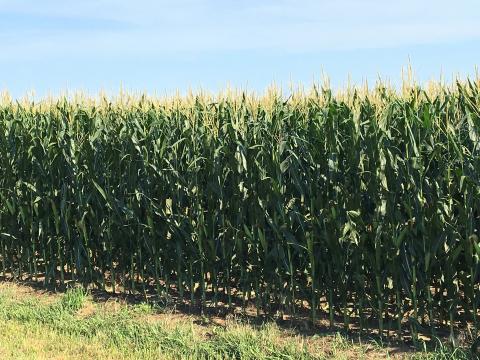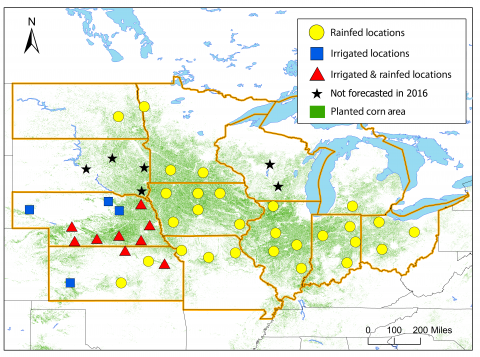Biomass Production of Winter Annual Cover Crops in Corn and Soybean
2016 Corn Yield Forecasts as of July 27
2016 Corn Yield Forecasts as of July 13
2016 Corn Yield Forecasts: Approach and Interpretation of Results
The Yield Forecasting Center will be providing in-season corn yield forecasts every two weeks starting in mid-July to aid growers and the ag industry in making management, logistics, and marketing decisions through the season. The Center consists of a core team at UNL in collaboration with agronomists and extension educators from universities throughout the Corn Belt.
Nitrogen Rescue Treatments in Corn
Managing N in a Wet Spring
USDA NASS estimated 26% of Nebraska’s corn acres had been planted as of May 2, well behind last year’s pace of 45% and slightly behind the five-year average of 31%. The pace is undoubtedly being affected by the amount of precipitation across the state and the wet field conditions (Figures 1 and 2).
Inoculating Your Soybeans: When, Where, Why?
Nebraska farmers must scrutinize inputs and focus on finding profit for their estimated 5.3 million soybean acres in 2016.
Nutrient Levels, Fertility, and the Price Squeeze
Current economic conditions are a challenge for crop producers to earn profits from corn, soybean, winter wheat, and milo production. Following is a discussion around how to make nutrient decisions this year. Robert Tigner is an Extension Educator focusing on agricultural economic issues.




